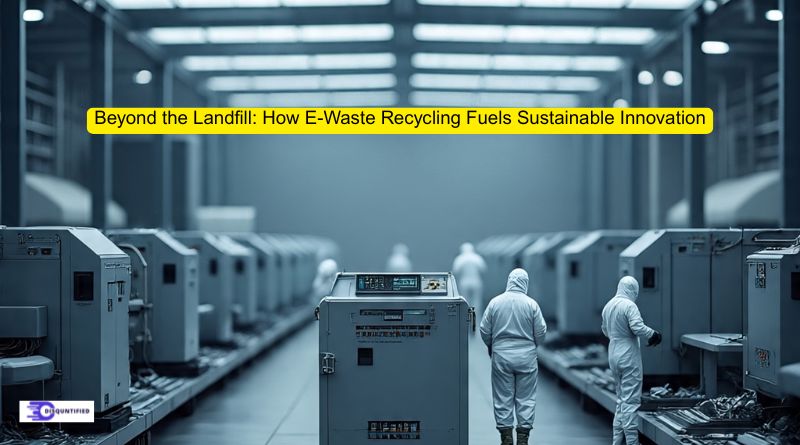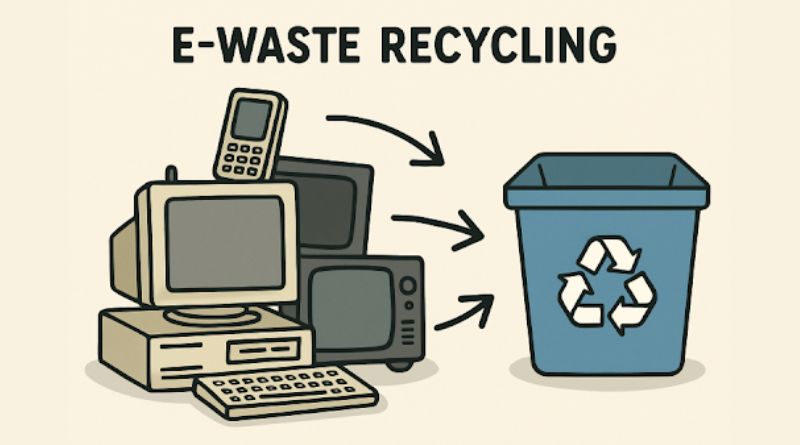The Rapid Rise of Electronic Waste
As technology advances at a breakneck pace, electronic waste (e-waste) volume continues to grow. Smartphones, laptops, televisions, and other devices are frequently upgraded or replaced, leaving behind many discarded electronics. Improper e-waste disposal can release harmful chemicals into the environment, making responsible management essential. Beyond environmental concerns, e-waste contains valuable materials like gold, copper, and rare earth metals, highlighting the importance of sustainable recycling practices.
Beyond the landfill, e-waste recycling fuels innovation by enabling the recovery of these resources and reducing the need for raw material extraction. By partnering with trusted e scrap recycling solutions in Texas, organizations and individuals can ensure electronics are processed safely, responsibly, and efficiently. Such initiatives support circular economies, minimize environmental impact, and promote sustainable technology solutions for the future.
What Is E-Scrap, and Why Does It Matter?
E-scrap encompasses a range of discarded electronic products, including computers, televisions, cell phones, printers, and home appliances. These items often contain precious metals such as gold, copper, and silver alongside hazardous substances like lead, mercury, and cadmium. The improper disposal of these materials can introduce significant risks to the environment and public health. Responsible collection and recycling of e-scrap help prevent toxic substances from contaminating soil and water while recovering valuable resources that can re-enter the supply chain.
Environmental Benefits of E-Scrap Recycling
The environmental case for e-scrap recycling is strong and increasingly urgent. Discarded electronics that end up in landfills can release toxic chemicals, endangering water sources and ecosystems. Through controlled recycling, hazardous components are managed safely, and metals and plastics are reclaimed for further use. The United Nations highlights that improving global e-waste recycling rates reduces greenhouse gas emissions and lessens the demand for raw material mining, often leading to deforestation and habitat loss.
Despite these benefits, less than 20 percent of e-waste globally is recycled responsibly, underscoring the need for better infrastructure, policies, and public participation.
How Does E-Scrap Recycling Work?
- Collection: Consumers and businesses deposit outdated electronics at authorized recycling programs or collection sites.
- Sorting: Items are separated by type, with reusable parts identified for refurbishment and irreparable devices prepped for further processing.
- Dismantling: Skilled technicians carefully disassemble devices to extract key components and hazardous materials.
- Processing: Advanced technologies—like shredding, magnetic separation, and water-based processes—are used to safely separate usable metals and plastics.
- Reuse or Refining: Recoverable materials are returned to manufacturers as feedstock for new products, closing the loop and reducing the need for new mining.
Economic Opportunities in E-Scrap Recycling
E-scrap recycling is not only an environmental imperative but also an economic engine. Communities generate new jobs in logistics, repair, material separation, and sales by repairing, refurbishing, and recycling electronics. According to the U.S. Environmental Protection Agency, the electronics recycling sector creates thousands of jobs nationwide, supporting environmental progress and local economies. Furthermore, extending device life through refurbishment can help bridge the digital divide by making affordable technology accessible to those who need it most.
What Can You Do With Old Electronics?
- Find a certified e-scrap recycling center by checking your municipality’s website or contacting local environmental agencies.
- Look for manufacturer take-back programs that safely handle obsolete devices.
- Donate working electronics to schools, non-profits, or community organizations.
- Prioritize erasing or destroying all personal data before recycling to protect your privacy.
- Follow community recycling calendars to ensure your electronics are disposed of appropriately.
Regulations and What’s Next in E-Scrap Recycling
Governments worldwide are introducing stricter laws and regulations for electronic waste. In the United States, many states have implemented producer responsibility laws that require electronics manufacturers to establish or fund recycling programs. Retailers are increasingly expected to offer in-store collection or mail-back initiatives, and stringent documentation and reporting on recycling rates are becoming the norm. Meanwhile, emerging technologies such as robotics and AI-powered sorting systems are streamlining the recycling process and improving material recovery rates.
Despite these advances, numerous challenges remain—including low participation rates and the increasing complexity of electronic devices. Expanding consumer education, public engagement, and continued investment in recycling infrastructure will be crucial for future progress.
Toward a Greener Future
As global tech consumption soars, e-scrap recycling will increasingly shape a cleaner, healthier, and more innovative future. Every household and organization participating in responsible device disposal contributes to reduced pollution, resource conservation, and a thriving green economy. Staying informed, choosing certified recycling solutions, and supporting policies encouraging sustainable design and fair recycling practices are all steps toward a better world. By making conscious choices today, you help power tomorrow’s sustainable innovations.


